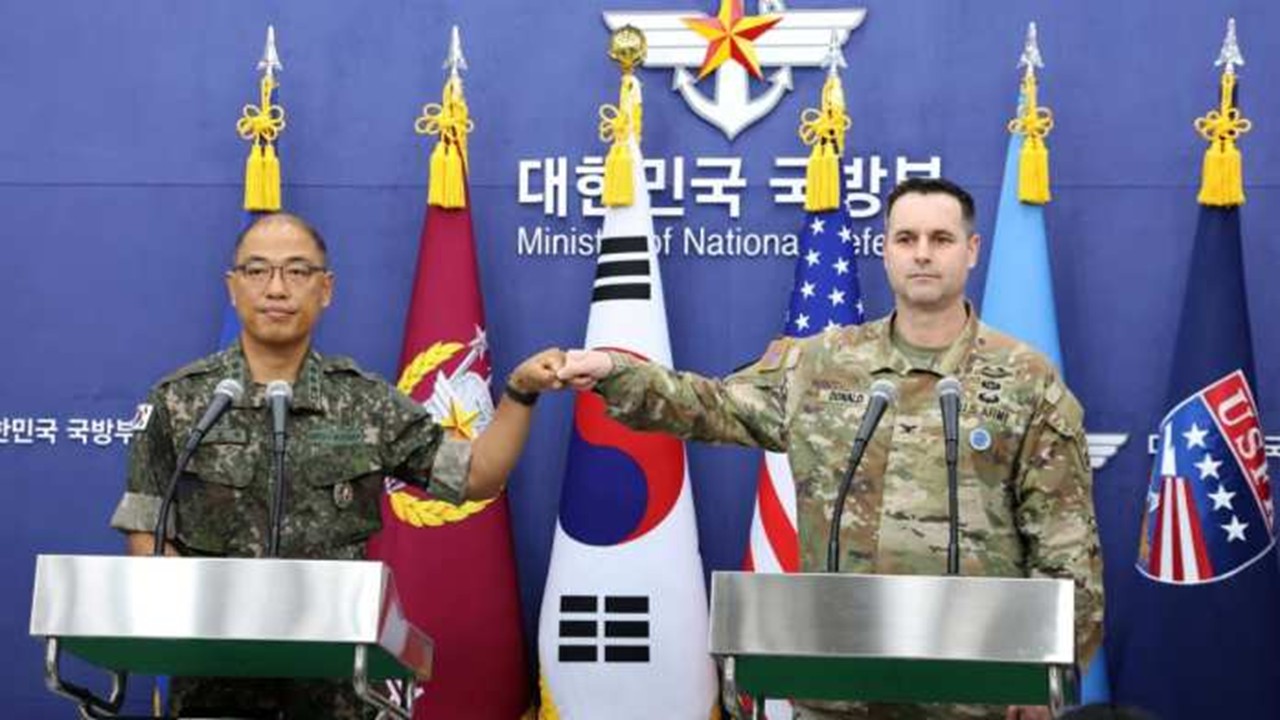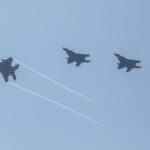The Ulchi Freedom Shield exercise began on August 18, spreading across dozens of military sites in South Korea. It runs for 11 days, led by command post simulations that pull in real-world data and stress tests.
Where conditions permit, live drills continue in the field. About 21,000 troops are involved – roughly 18,000 from South Korea, the rest from U.S forces. The training combines air, land, sea, space and cyber operations into one shared scenario. Neutral Nations Supervisory Commission observers track the process under the existing Armistice rules.
Ulchi Freedom Shield 25 schedule, troop numbers, and training scope
This year’s exercise runs from August 18 to 28. In the command-post phase, South Korea’s Joint Chiefs of Staff work with U.S. Forces Korea to see how smoothly they can handle everything from missile barrages and port shutdowns to long range fires. Staffers sit in hardened bunkers, ready to shift to backup sites if a main headquarters goes down, keeping the fight moving. Pilots hop from big bases to highway strips and tiny fields, while airlift crews move small loads to stay light and tough to target.
Across several allied airfields, dispersal drills and quick turnarounds continue. Fighters move between Osan, Kunsan, and Daegu with small ground crews and forward stores of spare parts. Maintainers run shortened checklists that still meet safety standards. Tankers change refueling tracks to complicate tracking. Maritime patrol aircraft cross their flight paths to cover sea lanes and pass cues to surface ships.
Heat and flood delays shift half of 44 field drills to September
A heat wave and flood damage forced changes before the start of the drills in South Korea. The joint staff moved about half of the planned field events into September but kept command post work on the August schedule. Officers from the Republic of Korea Joint Chiefs said the decision was meant to balance readiness with troop safety. U.S. officials rejected claims that the adjustment signaled any policy shift, stressing that it was a response to conditions on the ground.
The pause on some ranges creates space for deeper command post work. Planners inject extra intelligence into scenarios. Logistics teams re-route supplies for flood responses. Cyber units run extended operations against scripted attacks. Engineers model power and fiber repairs. Signal officers measure network delay and track how it alters targeting.
Units will fold those findings into training cycles and budget requests. Commanders will use measured results to set maintanence and spare parts priorities for the next phase.
North Korea’s statements and civil defense drills in South Korea
North Korea’s defense minister, No Kwang Chol, denounced the drills as “military confrontation” and warned of a response to “any provocation going beyond the boundary line.” No details followed, staying in line with Pyongyang’s usual pattern-projecting strength without committing to action.
South Korea’s Ulchi drills run in parallel, testing shelters, alert systems, and continuity of government. Workers rehearse evacuations, transit reroutes, and medical response. Tying it to Ulchi Freedom Shield keeps civilian and military coordination tight-key in the event of cyberattacks, missile strikes, or major disasters.
Alliance modernization, cost-sharing signals, and trilateral defense coordination with Japan
The exercise ties directly to the Washington summit. President Lee will meet President Trump on August 25 to discuss cost-sharing, industrial ties, and alliance posture.
U.S. policy now emphasizes capability over troop numbers. Units measure readiness by training, network strength, and munitions stocks.
OPCON transfer is a technical project. Staff treat each milestone as a test, with pass-fail standards and repeatable drills.
This work relies on strict procedures and interoperable systems. Exercises expose weak points and force corrections. Liaison officers from Australia, Britain, Canada, France, and other UN partners sit in planning cells to help prevent misreads across commands.
Coordination with Japan now shapes air and maritime operations. Missile warning improves when allied sensors share clean, validated tracks. Operators work in seconds and ranges-not talking points.
Cost-sharing talks carry political weight and real budget impact. Fuel, parts, and munitions need stable funding. Shared logistics and sustainment plans close gaps in a crisis. Contracting officers push requirements through budgets and track delivery without drama.
Logistics firms follow movement plans and look for gaps they can close under existing vehicals and warehouses. Aerospace and defense primes care about the maturity of counter-UAS tactics and low-probability-of-intercept communications. Mid-tier vendors that supply power systems, sensors and software pay close attention to interface stability. If the alliance keeps hardware and software interfaces stable, vendors can deliver upgrades without breaking host platforms.
North Korea’s tie-up with Russia adds weight to allied planning without changing the near term script. The combined staff already assumed high volumes of short and medium-range missiles, long-range artillery, and cyber activity.
The exercise also gives commanders a chance to adjust small but meaningful details before winter training. Staff can change the order of battle in a simulation. Range control can change live-fire sequencing. Maintenance can change how parts flow through depots. Leaders can decide which units need extra time in September, and which ones can move on. The AAR process turns thousands of small observations into a few dozen specific orders. Those orders live in dull places like procurement lines and training calenders.
The public will hear little while the drill runs. That is intentional. Crews follow checklists. Staff run timelines and enforce milestones. Political teams prepare for the summit and upcoming budget cycles.
The alliance shifts toward smaller, faster, networked force packages. These units move across the peninsula or farther afield. That creates a lighter footprint and a sharper response. It requires constant training and steady investment.
The final days of Ulchi Freedom Shield will not bring a parade. They will produce logbooks, maintanence reports, and full drives of sensor data. Commanders will use those records in briefings, audits and budget reviews.
REFERENCE SOURCES
- https://www.scmp.com/week-asia/politics/article/3321435/whats-behind-north-koreas-unusual-reaction-us-south-korea-drills
- https://www.usfk.mil/Media/Press-Products/Press-Releases/Article/4268084/the-republic-of-korea-and-united-states-kick-off-ulchi-freedom-shield-25/
- https://apnews.com/article/south-korea-us-drills-ulchi-freedom-shield-north-korea-7c938649e2e18bae5fc781a9e98223c4
- https://abcnews.go.com/International/wireStory/south-korean-us-militaries-begin-annual-summertime-drills-124733556
- https://www.stripes.com/theaters/asia_pacific/2025-08-07/heat-wave-south-korea-military-drills-18688843.html
- https://www.stripes.com/theaters/asia_pacific/2025-08-13/north-korea-mortars-ulchi-freedom-south-korea-18747520.html



